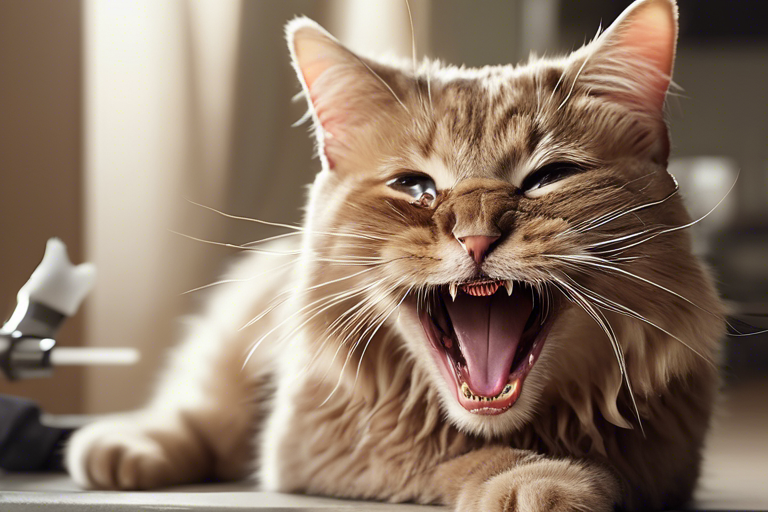Cat Dental Chart : A Comprehensive Guide to Understand
As a responsible cat parent, you strive to ensure that your furry friend is healthy and happy. While regular check-ups and vaccinations are well-known aspects of pet care, cat dental health often gets overlooked. Just like humans, cats can suffer from dental problems such as gum disease, tooth decay, and bad breath. That’s why understanding your cat’s oral health through a cat dental chart is crucial.
What is a Cat Dental Chart?
A cat dental chart is a comprehensive record of your cat’s dental health. It serves as a chart that lists all of your cat’s teeth, along with any dental issues they may have. Usually maintained by your veterinarian, a cat dental chart is an essential tool for monitoring your cat’s oral health.
The Importance of a Cat Dental Chart
Regular dental check-ups and cleanings play a vital role in maintaining your cat’s oral health. A cat dental chart helps your veterinarian keep track of your cat’s dental health over time. By identifying potential dental problems early on, your vet can take the necessary steps to prevent them from becoming more serious.
Additionally, a cat dental chart enables your veterinarian to track any dental procedures your cat has undergone, such as extractions or fillings. This information helps create an accurate dental history for your cat, aiding in identifying any underlying health issues that may affect their dental health.
Understanding Your Cat’s Dental Chart
A cat dental chart typically includes several key pieces of information. Let’s break down what you can expect to see on your cat’s dental chart:
- Tooth Number
Each tooth in your cat’s mouth is assigned a unique number that corresponds to its location. This numbering system helps your vet identify and track each tooth effectively.
- Tooth Condition
The condition of each tooth is noted on the dental chart, indicating whether it is healthy, decayed, or missing.
- Gum Condition
The chart also includes the condition of your cat’s gums, noting whether they are healthy, inflamed, or bleeding.
- Treatment
If your cat has undergone any dental procedures such as extractions or fillings, this information will be recorded on the dental chart.
- Follow-Up
Depending on the state of your cat’s teeth and gums, your veterinarian may recommend follow-up appointments to monitor their dental health.

How to Utilize a Cat Dental Chart
While your veterinarian is typically responsible for maintaining your cat’s dental chart, it’s important for you to understand how to read and interpret the information. This knowledge helps you stay informed about your cat’s dental health and work collaboratively with your veterinarian to provide the best possible care. Here are some tips:
- Understand the Terminology
Dental charts may include technical terms that may be unfamiliar to pet owners. Take the time to familiarize yourself with the terminology, allowing you to comprehend your veterinarian’s explanations.
- Ask Questions
If you’re unsure about anything on your cat’s dental chart, don’t hesitate to ask your veterinarian. They will be more than happy to explain any unfamiliar terms or details.
- Keep Your Own Records
While your veterinarian maintains your cat’s official dental chart, it’s a good idea to keep your own records. These records can include notes about any concerns you have about your cat’s dental health and questions you want to ask your vet.
- Follow Your Vet’s Recommendations
If your veterinarian recommends follow-up appointments or additional treatments for your cat’s dental health, be sure to follow their recommendations. It’s essential to prioritize your cat’s dental care to ensure their well-being.
Now that we understand the significance of dental health in cats and the importance of a cat dental chart, let’s delve deeper into what a cat dental chart entails.
A cat dental chart acts as a record that outlines the state of a cat’s dental health. Veterinarians use this tool to track their feline patients’ teeth and gum health. The chart is typically divided into several sections, each representing a different area of the mouth.
The chart provides information about the cat’s teeth and gums, including the color, condition, signs of decay or damage, and gum health. It also notes any treatments performed on the cat’s teeth, such as cleanings or extractions.
Different veterinarians may use various cat dental chart formats, but most will contain similar information. Some charts may be more detailed than others based on the veterinarian’s preference and the cat’s specific needs.
One commonly used cat dental chart is the American Animal Hospital Association (AAHA) Dental Chart. This widely-used chart includes a thorough description of each tooth, including its position in the mouth, size, and condition.
Another popular charting system is the Modified Triadan System, which assigns a unique number to each tooth. This system allows veterinarians to track the health of individual teeth over time more easily.
Regardless of the charting system used, the information contained within a cat dental chart is crucial for maintaining a cat’s dental health. Regularly monitoring the state of a cat’s teeth and gums enables veterinarians to identify and treat any issues before they worsen.
In addition to helping veterinarians monitor a cat’s dental health, a cat dental chart can also be a valuable tool for cat owners. By understanding the information within the chart, owners can make informed decisions about their cat’s dental care and collaborate with their veterinarian to develop a plan for maintaining their cat’s dental health.
So, how often should a cat dental chart be updated? The frequency will depend on the cat’s individual needs. Generally, veterinarians recommend updating a cat’s dental chart at least once a year during their regular wellness exams. However, cats with a history of dental issues may require more frequent updates, while those with excellent dental health can go longer between updates.
Conclusion
cat’s dental health is an essential aspect of their overall well-being. Regular dental exams, cleanings, and the use of a cat dental chart are vital for maintaining healthy teeth and gums in cats. By working closely with their veterinarian and staying informed about their cat’s dental health, owners can ensure that their furry friends stay happy and healthy for years to come.






